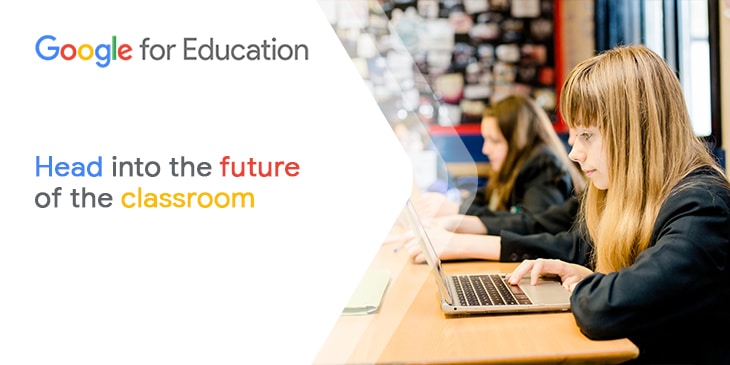Head into the future of the classroom
In today’s digital world, technology has made opportunities endless for students. Learning can happen from anywhere in the world, and teachers can provide their students with a more personalised education. In short, the future of education is here.
It’s more important than ever for teachers to be aware of security trends and to be armed with the tools to keep their students safe in the classroom. This shift toward tech-enabled learning brings with it a myriad of safety and security challenges:

73% of parents in the UK are concerned about their kids accessing inappropriate material online.

37% of UK teachers have seen an online safety incident in their school.

84% of parents and guardians worldwide report feeling worried about their children’s online safety.
Empower the students where and how they learn
With distance and hybrid learning here to stay…

Comprehensive security protections will become vital in ensuring that the continued shift to digital learning doesn’t compromise classroom security.

Unfortunately, many schools have struggled to stay a step ahead when it comes to cybersecurity, with many schools lacking the resources to implement security solutions. The result is a growing demand for a more proactive approach to these challenges.
99% of UK teachers say online safety should be part of the curriculum.
From platform-specific regulations to complex legislation…
Making sense of the security landscape is challenging. Schools are looking for guidance on where to turn for the answers. Cybersecurity guidance and education need to be clearly communicated, personalised, and tailored on more of a localised scale.
There isn’t a widely accepted domestic or international standard on how to be safe online. There are also barriers in navigating the array of policies and laws that are intended for different audiences.
59% of educators and administrators say they either ‘aren’t sure’, or ‘haven’t received’ training or new cybersecurity initiatives for remote learning
54% of educators and administrators said budget is a medium or large barrier in strengthening their institution’s cybersecurity posture
Having a trusted partner…
This is critical when it comes to navigating the complexity of cyber threats and security in the digital space. Allowing teachers to feel confident and comfortable with the technology their students are using is important, and Google for Education can help.

With built-in security, rigorous compliance, and control and ownership of your data, Google for Education provides a safer way for everyone in your school community to engage and learn – students and teachers alike.
Source:
Bringing online safety education programs to UK schools. (2018)




